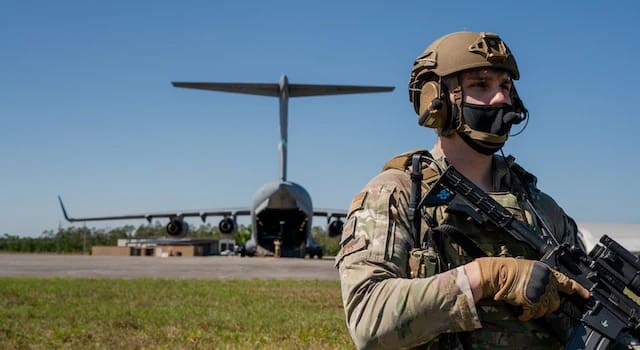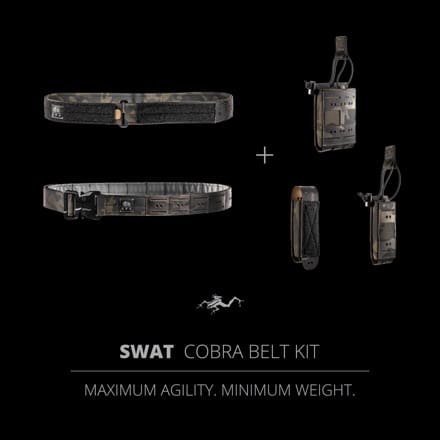MOODY AIR FORCE BASE, Ga. (AFNS) —
Aircrew from the 3rd Airlift Squadron at Dover Air Force Base, Delaware, and the 6th AS, at Joint Base McGuire-Dix-Lakehurst, New Jersey, participated in exercise Mosaic Tiger led by the 23rd Wing at Moody AFB Feb. 22-26.

The exercise tested Agile Combat Employment skills in a simulated deployed environment to train multi-capable Airmen for the future. Airmen from Air Mobility Command took part in the exercise to enhance readiness and reinforce AMC support to the joint warfighter as well as support of Air Combat Command.
ACE refers to the ability to launch, recover and maintain aircraft away from main air bases and employ the aircraft, as well as multi-capable Airmen from atypical locations. For this exercise, Moody AFB served as the headquarters, while Florida’s MacDill AFB, Patrick Space Force Base and Avon Park Air Force Range served as forward and contingency operating locations.
Multi-capable Airmen teams from a variety of Moody AFB units deployed to the locations across Florida. The Dover AFB C-17 Globemaster III provided passenger transportation and equipped Airmen downrange with necessary accoutrements.

“In order to create a realistic combat environment, you have to have logistical support to do so,” said Maj. Mike Gilpatrick, 6th AS chief of tactics. “In a realistic combat environment, the C-17 would be able to support ACE via delivering multi-capable Airman teams to various forward operating bases.”
Over the course of the five-day exercise, 13 AMC aircrew members transported over 244,370 pounds of cargo and 231 passengers to and from all exercise locations on the C-17. The cargo included vital equipment such as bomb-loading carts, aerospace ground equipment generators and a fuel truck.

“If you don’t have a C-17, you can’t accomplish as many objectives when you are trying to test out the capability,” Gilpatrick said. “We’re delivering multiple Airmen to multiple bases, and you can now have a more dynamic and challenging environment for the exercise to take place in. If you don’t have a C-17 there, you can’t deliver as many folks and stuff to places. Therefore, you can’t have as challenging of a problem set you have to solve.”
Moody AFB also supplied aircraft such as the A-10 Thunderbolt II, HH-60G Pave Hawk, HH-60W Jolly Green II and the HC-130J Combat King II. E-8 Joint Stars, belonging to Robins AFB, also provided support though ground surveillance.
“Our Airmen are performing at a very high and innovative level,” said Lt. Col. Kenneth Roberts, 23rd Mission Support Group deputy commander. “They’re looking for solutions, and the key in this new environment is finding those new solutions.”
Echoing Air Force Chief of Staff Gen. Charles Q. Brown, Jr.’s “Accelerate Change or Lose” strategy, Gen. Jacqueline Van Ovost, commander of AMC, said adaptive and agile Airmen, capable of accomplishing tasks outside their Air Force specialty code, are vital to delivering rapid global mobility in today’s operating environment.

“By operationalizing our innovate, execute and learn methodology, we will aggressively expand upon current capabilities to generate and project the force, defend installations and networks and keep the joint force informed and synchronized across the competition continuum,” Van Ovost said.
Capt. Reed Fleming, 3rd AS pilot said exercises such as Mosaic Tiger have helped mobility Airmen understand their role and skills necessary for the ACE concept.
“Through the implementation of the ACE concept, we’re going to see more integration and more cross talk, with ACC learning how they can use AMC effectively as well as AMC being willing to be flexible for the ACC assets,” Fleming said. “This (was) a great opportunity for us to come together to work (toward) a common goal.”
By A1C Faith Schaefer, 436th Airlift Wing Public Affairs







































































































































